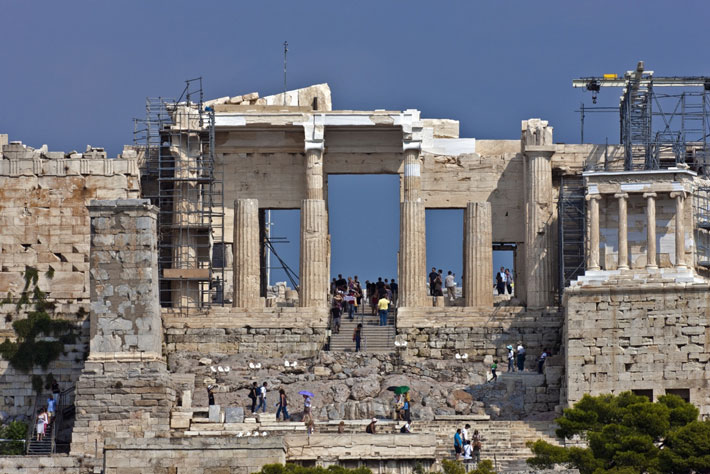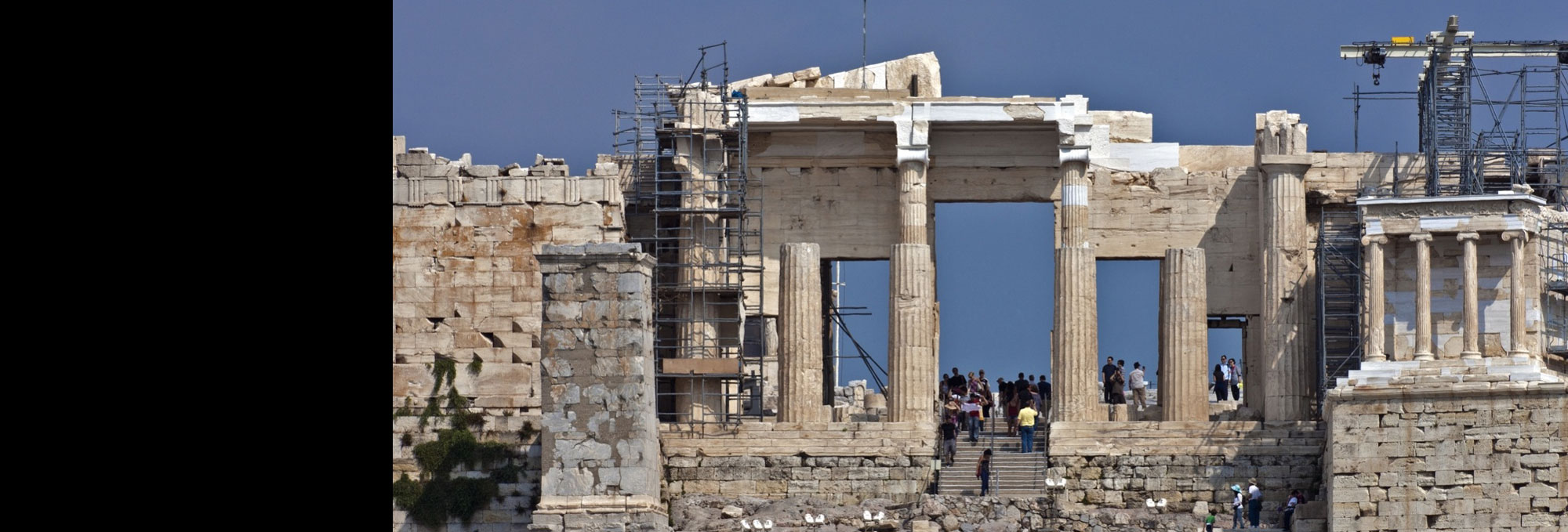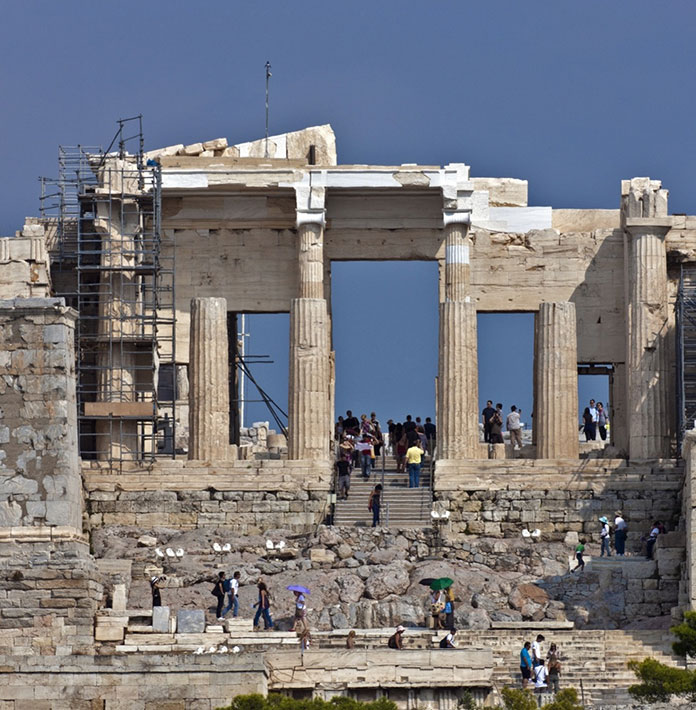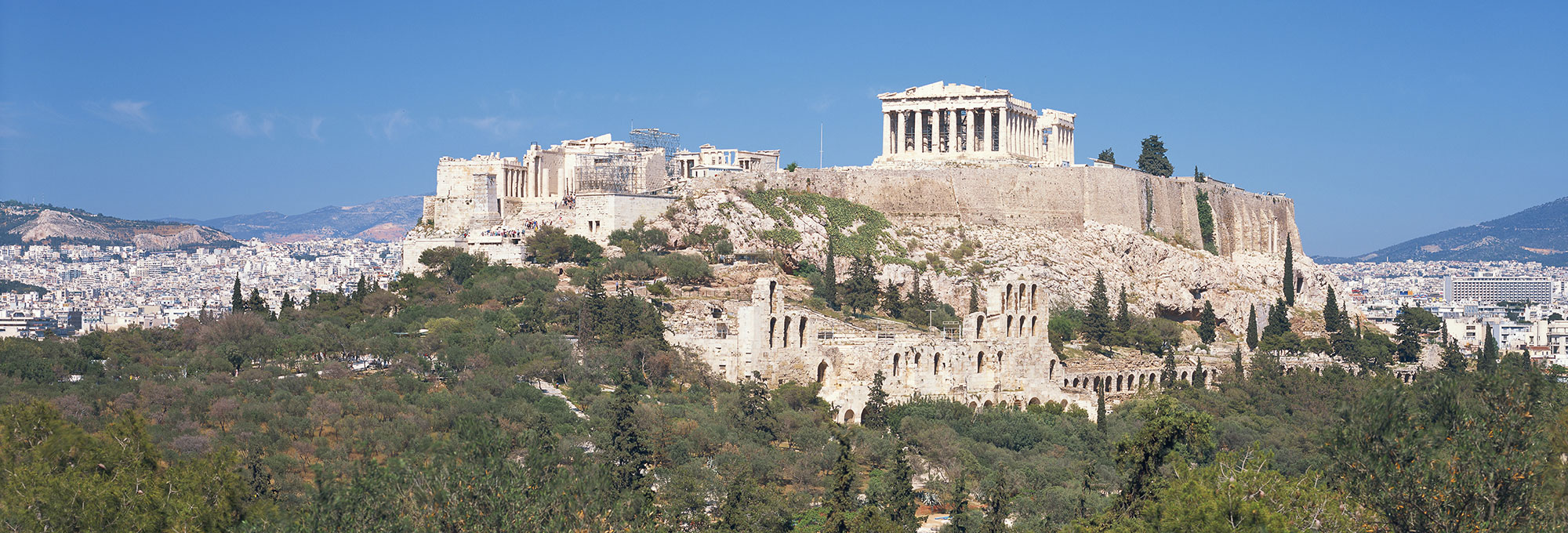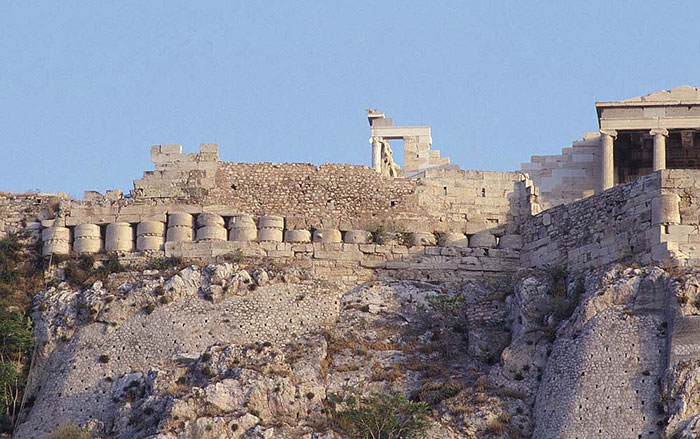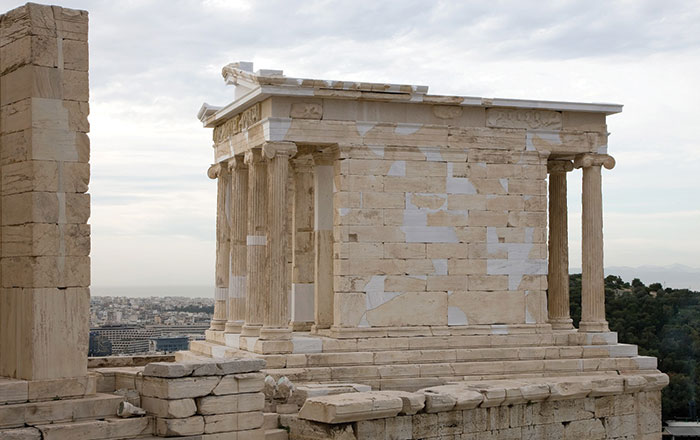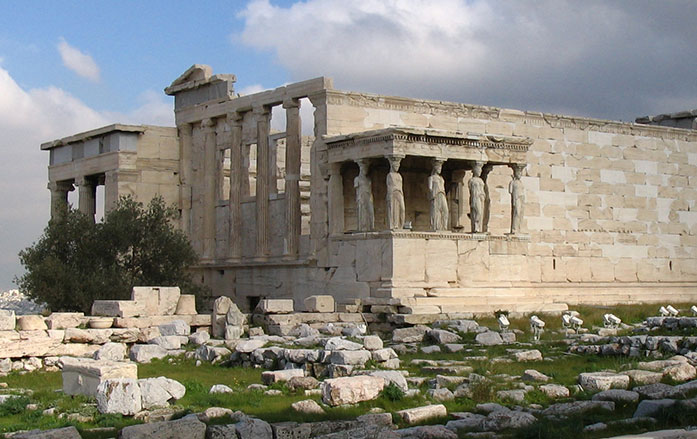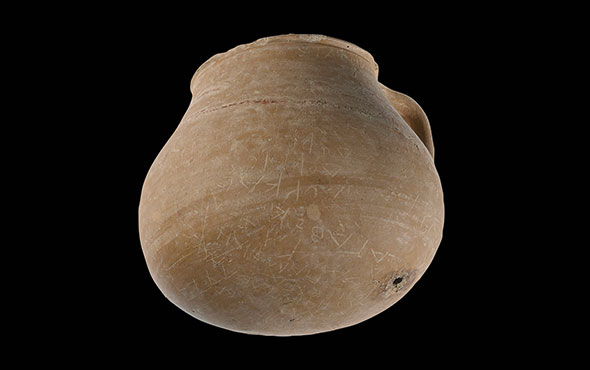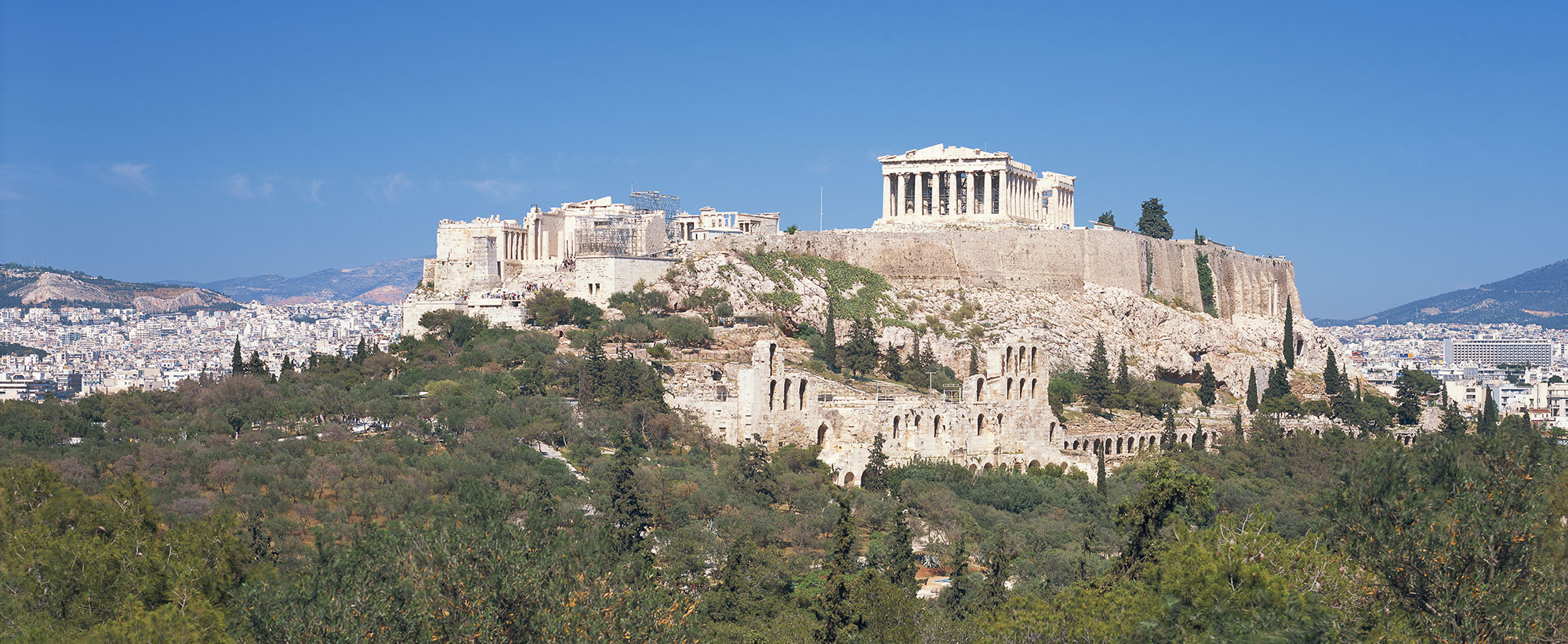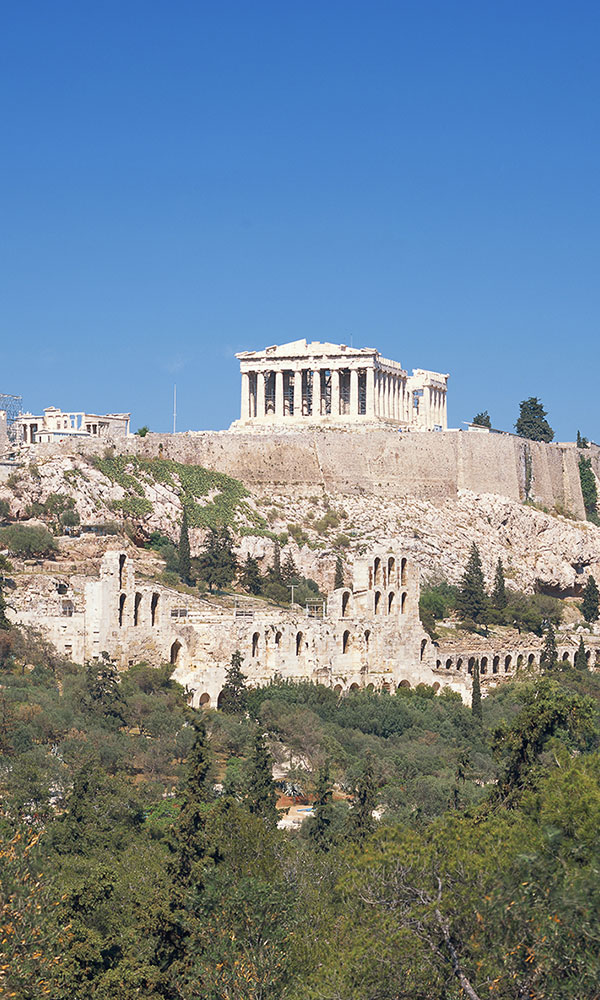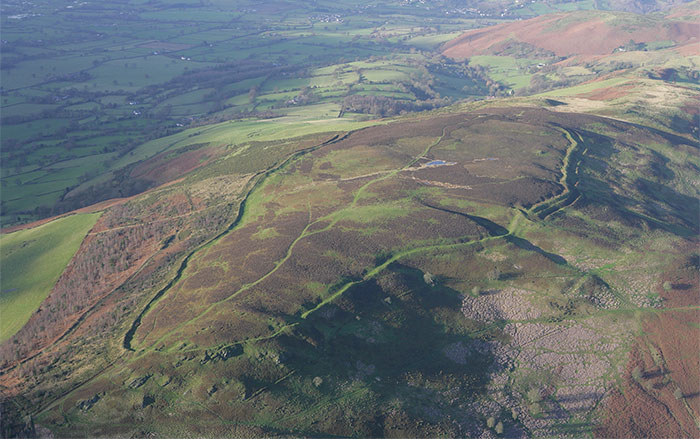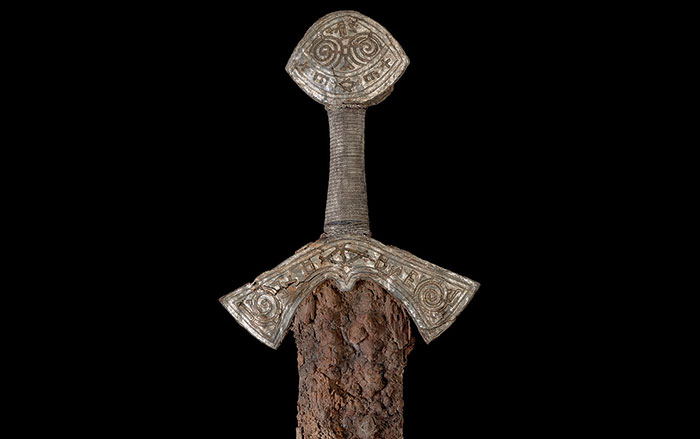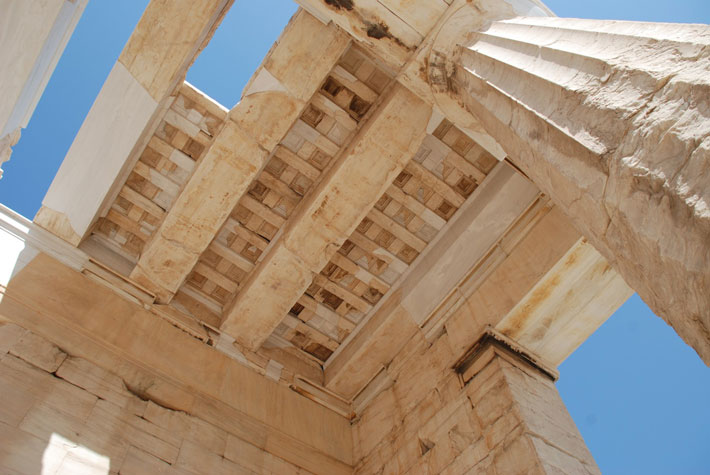
Ever since the mid-sixth century B.C., a monumental gateway has stood on the west side of the Acropolis at the entrance to Athena’s sanctuary. The original gate was replaced by one that was subsequently destroyed by the Persians and then repaired. The impressive structure seen today—actually three buildings on two different levels—was built between 437 and 432 B.C. by the architect Mnesikles. Many sections of the gate restored by Nikolaos Balanos in the early twentieth century have been dismantled, repaired, and replaced, with much of the recent work focused on the Propylaia’s once brightly painted marble coffered ceilings. Now completed, this project required arresting the deterioration of the marble resulting from the iron reinforcements used by Balanos. In addition, 24,00 architectural members needed to be properly identified—including ones that hadn’t been used in earlier restorations, fragments wrongly placed, and pieces that required their own restoration—in order to determine what needed to be fashioned anew. As with the other buildings of the Acropolis, the Propylaia was repeatedly used for purposes different from those originally intended—it has been a church, a residence for Frankish dukes, and a garrison and munitions store under the Turks. The most recent effort has succeeded in restoring the fifth-century B.C. experience of entering the Acropolis through an impressively roofed structure, as Mnesikles intended.
